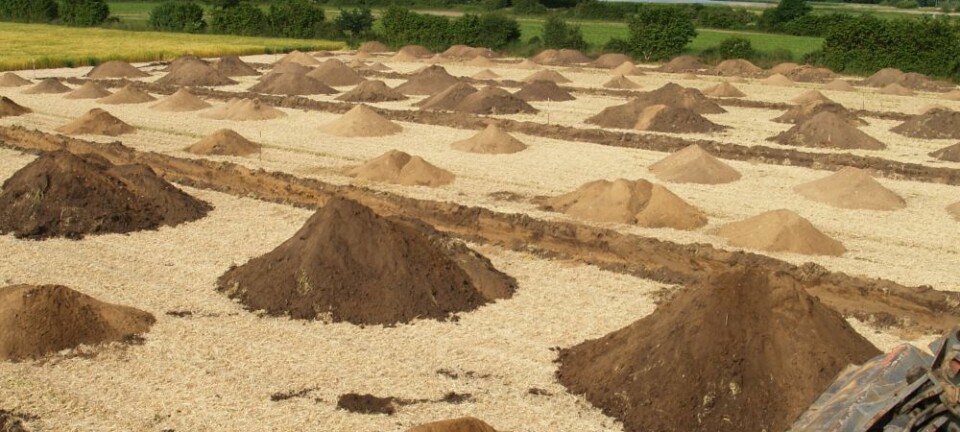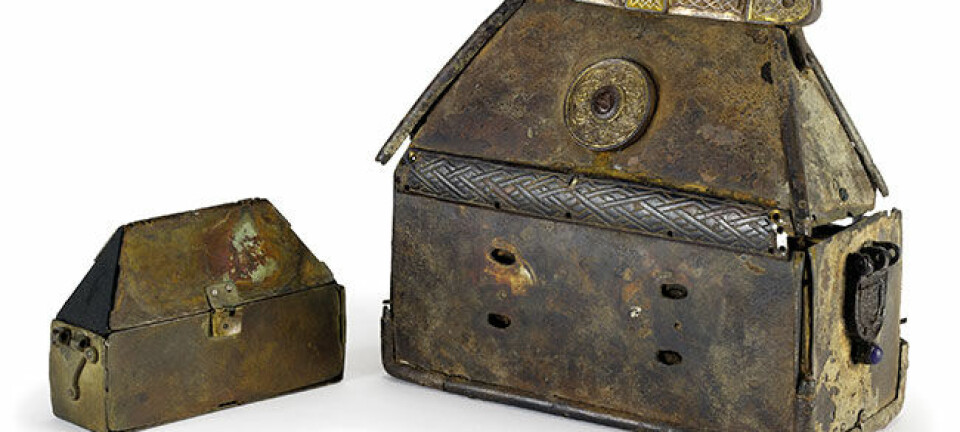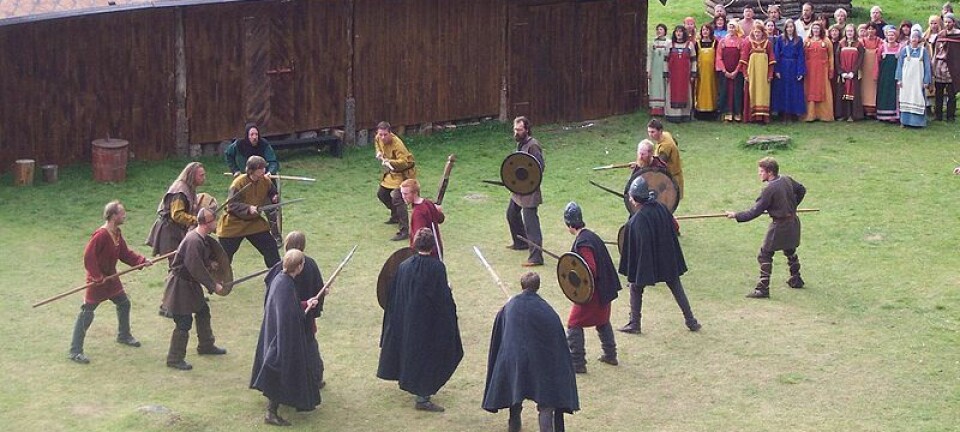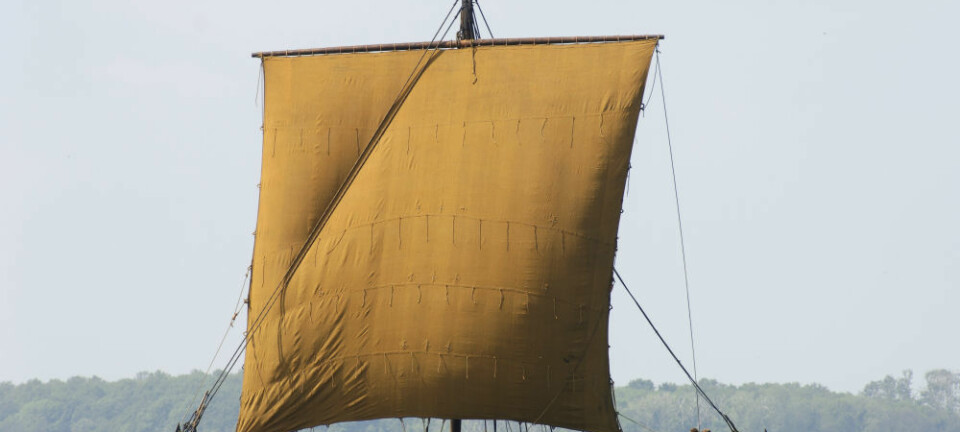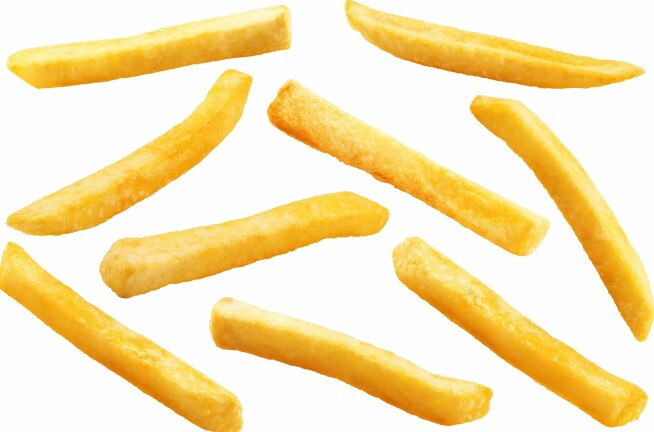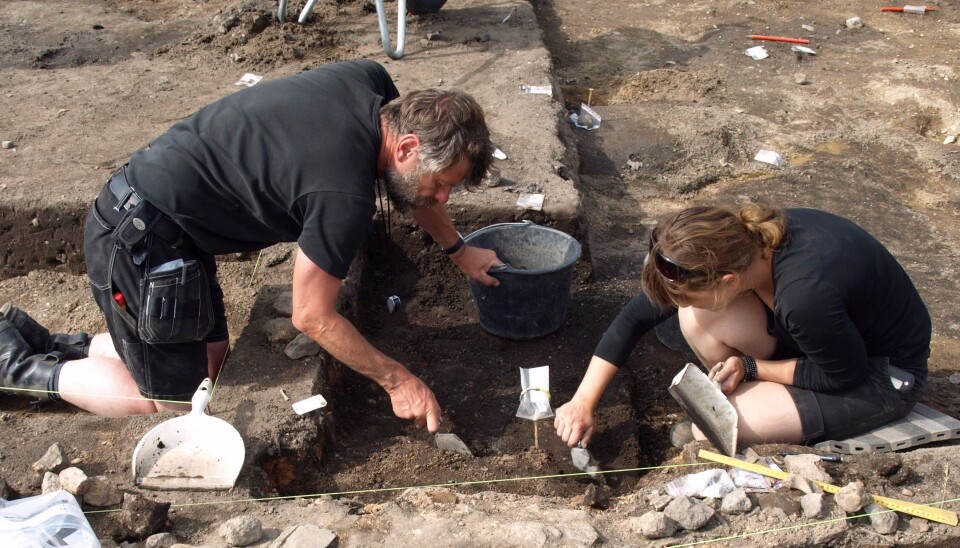
Prosperous Vikings whitewashed their walls
Archaeologists have found Denmark’s oldest lime kiln near a large Viking hall at a Viking settlement on the Danish island of Zealand.
Archaeologists recently dug up a find that turned out to be the base from Denmark’s oldest known lime burning oven. The oven, also known as a lime kiln, has been used to burn limestone for a large nearby Viking hall at Tissø on the west side of Zealand.
”We can now say that lime burning has been taking place in Denmark much earlier than previously thought. We did know that some Viking halls were whitewashed, because we have found traces of lime on mud walls, but now we also know that the Vikings burned lime themselves, says Sandie Holst, an archaeologist at the National Museum of Denmark.
The find, which has been dated to the 9th century, confirms presumptions that the Vikings actually burned lime themselves. The researchers are now hoping to find more and better-preserved lime kilns around Denmark.
All that remained of the oven was its base, but the hard soil showed that it had been surrounded by very high temperatures. There were also traces of limestone and charcoal.
We can now say that lime burning has been taking place in Denmark much earlier than previously thought. We did know that some Viking halls were whitewashed, because we have found traces of lime on mud walls, but now we also know that the Vikings burned lime themselves.
Sandie Holst
”We came across a layer of ash which was unusually hard, and it sounded as if we were scraping on a rock. While scraping, we noticed some white lumps, which turned out to be limestone, and limestone does not belong in this otherwise sandy soil,” says Peter Steen Henriksen, an agrologist at the museum.
Whitewashed walls used by the powerful Vikings
The base of the lime kiln was found 50 metres from the royal seat, which was a large hall measuring more than 500 square metres in floor plan. And that’s no coincidence:
“There’s no doubt that having a whitewashed house has been associated with a high status,” says Holst. “We therefore also believe that this has mainly been used on the large Viking halls, which were designed to add an impressive and illuminating touch to the surrounding landscape.”
Holst believes that the area around Tissø must have been the home of an aristocracy. One clue is that there was once a King’s hall there; another is that other objects found in the area also appear to have been used by the higher classes. One of these objects is a large golden ring measuring 35 cm in diameter.
We came across a layer of ash which was unusually hard, and it sounded as if we were scraping on a rock. While scraping, we noticed some white lumps, which turned out to be limestone, and limestone does not belong in this otherwise sandy soil.
Peter Steen Henriksen
“There has been no doubt about who was in charge in this area, and therefore I do not think that they whitewashed their halls to command respect among the locals, but rather to impress visiting guests,” she says.
Where did the Vikings learn to whitewash?
Archaeologists have found fragments of whitewashed mud walls dating as far back as to the Bronze Age in Denmark. It is, however, not clear who burned the lime, and how they learned to do this.
“We know that the Romans were familiar with this technique, and at the end of the Roman Empire period, this was very common in places such as Germany and in Britain. This indicates that the technique is likely to have come from contacts from the south and in Britain,” says Holst.
Since only the base of the oven is preserved, it is, however, not easy to say how the Vikings used it. It may perhaps only have been used once to burn lime for the King hall at Tissø, but it may also have been a more permanent oven. The researchers are now very keen to find more ancient Danish ovens so that they can settle this uncertainty.
Burning limestone isn’t easy
There’s no doubt that having a whitewashed house has been associated with a high status. We therefore also believe that this has mainly been used on the large Viking halls, which were designed to add an impressive and illuminating touch to the surrounding landscape.
Sandie Holst
Burning limestone is a bit tricky. First of all, you need to reach temperatures of more than 900 degrees Celsius.
”When you heat the limestone to very high temperatures, the CO2 in the limestone splits off,” says Henriksen. “When the slaked lime is then applied to a wall, it starts absorbing CO2 again and turns back into limestone, which is insoluble in water.”
He also stresses that this work was not without its risks:
“If you get the slaked lime on your hands, your skin is transformed into soap, and if you happen to inhale the dust, it turns into slaked lime in your lungs. This etches, and it’s not good to get it in your eyes either,” he says.
“So either they had to make sure they knew what they were doing, or they would get some slaves to do the dirty work for them.”
Fifty kilos of lime to paint the hall
Another challenge was finding enough lime to paint the entire hall – or more.
”I reckon they would have needed around 50 kilos of lime to pain the hall, but we believe there have been other buildings that also were whitewashed, so they have probably used more than these 50 kilos,” explains Holst.
The researchers believe that the Vikings gathered these large amounts of lime by collecting seashells, extracting limestone from local mineral springs (this is also known as travertine) or by simply collecting limestone from the nearby cliffs.
The results from the researchers at National Museum of Denmark will be published in the Danish Journal of Archaeology later this year.
-------------------------
Read the Danish version of this article at videnskab.dk
